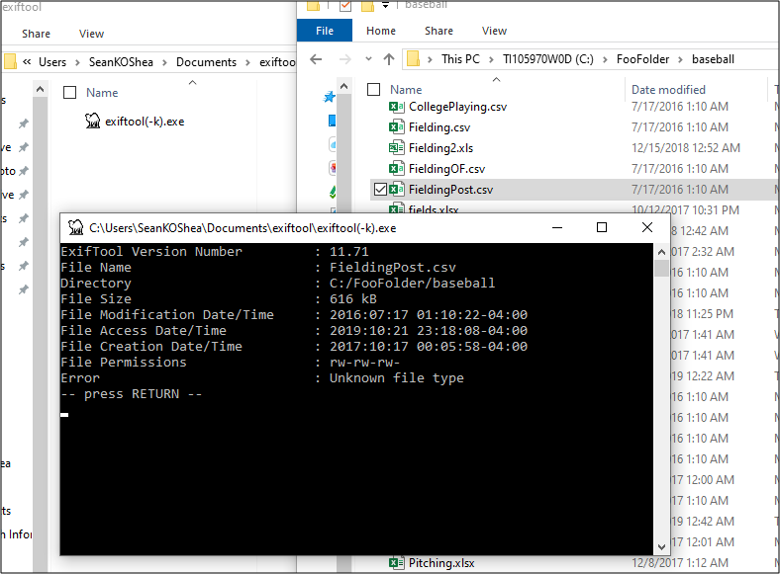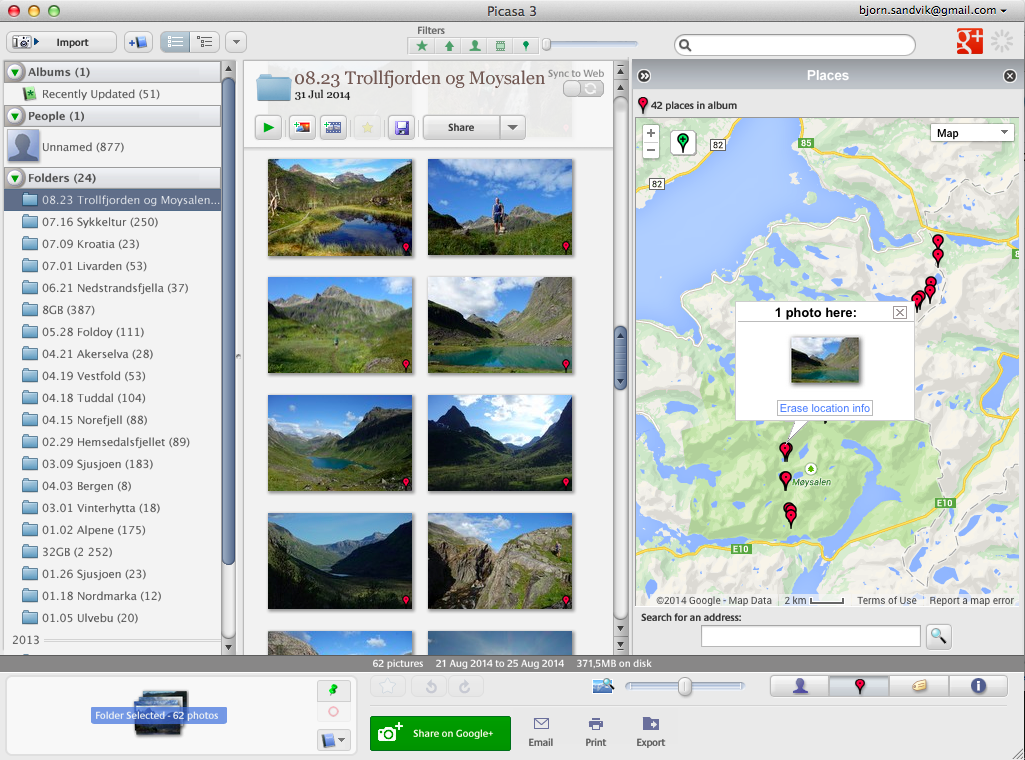

Illegal characters in Windows file names are:Īny tag used in generating a file name which may contain these characters must first be filtered to remove or translate these characters. Warning: Writing illegal file names in Windows can have unpredictable results and may result in data loss. This can result in extreme format codes like %%%%f when using the -d option. In a Windows batch file, all % characters must be escaped as %%.

in the form " YYYY:mm:dd HH:MM:SS"), otherwise the date formatting will fail and the file will not be renamed or moved (but this may be changed via the API StrictDate option).Īlso note that the -d formatting applies to date/time tags used in -if conditions unless the print conversion is disabled by adding a # suffix to the tag name. If the -d option is used, the unformatted date/time value must be valid (ie. Also see example 11 for the directory precedence rules.) This is true even if the -o option is superseded by writing the Directory tag, or through a FileName which includes a directory specification. (Only writable system tags may be set without causing the file to be rewritten.) If desired, the -overwrite_original option may be used to remove the original copy when the file is rewritten.Ĭonversely, the -o option may be used to force exiftool to always create a copy of the file, even if no meta-information tags are written.

However, if any "real" tags are written at the same time, then the file is rewritten to the new destination and the original file is left unchanged. Writing the FileName and/or Directory tags alone causes the file to be renamed or moved, not copied. See the Extra Tags documentation for more information. This feature allows files to be organized without affecting the originals. Instead of renaming or moving the file, writing HardLink creates a hard link with the specified name. Also, a list of of common date format codes is provided for reference.Īdvanced feature: The write-only HardLink tag may be written using a technique similar to FileName. The examples below demonstrate the use of this feature. When organizing files by date/time, the -d (date format) option is essential for specifying a format for the date/time tag(s) used to generate the new file and/or directory name. See the -w option in the application documentation for details. Modifiers may also be used to change the default behaviour of these format codes. Note that these codes must be escaped with an extra % if used within a date format string. Also, %c may be used to add a copy number to the output file name to avoid collisions with existing file names. When writing the FileName, Directory or TestName tag, %d, %f and %e may be used to represent the directory, name and extension of the original file (in a similar way to the -o, -w and -tagsFromFile options).
#EXIFTOOL CREATEDATE ALL 00 FULL#
(Note that there is no corresponding test tag for Directory, but TestName supports a full path name just like FileName, so the directory may be tested as well.) Writing TestName displays the old and new names without making any changes to the files. The write-only TestName tag provides a mechanism for dry-run testing of the rename feature. Existing files will not be overwritten (but see "Warning" below). contains a ' /' character), then the file is also moved to the specified directory (see example 6 below), and the directory is created if necessary. If the new FileName has a directory specification (ie. The directory is created if it doesn't already exist. Writing the Directory tag moves a file to a specified directory. The most common use of this feature is to organize images by date/time, but any other tag value may also be used. This is a powerful feature when combined with the -tagsFromFile ability to copy the values from other tags. FileName and Directory tags FileName and Directory tagsīy writing the FileName and/or Directory pseudo tags, ExifTool can be used to rename and/or move images into directories according to any information contained in the image.


 0 kommentar(er)
0 kommentar(er)
